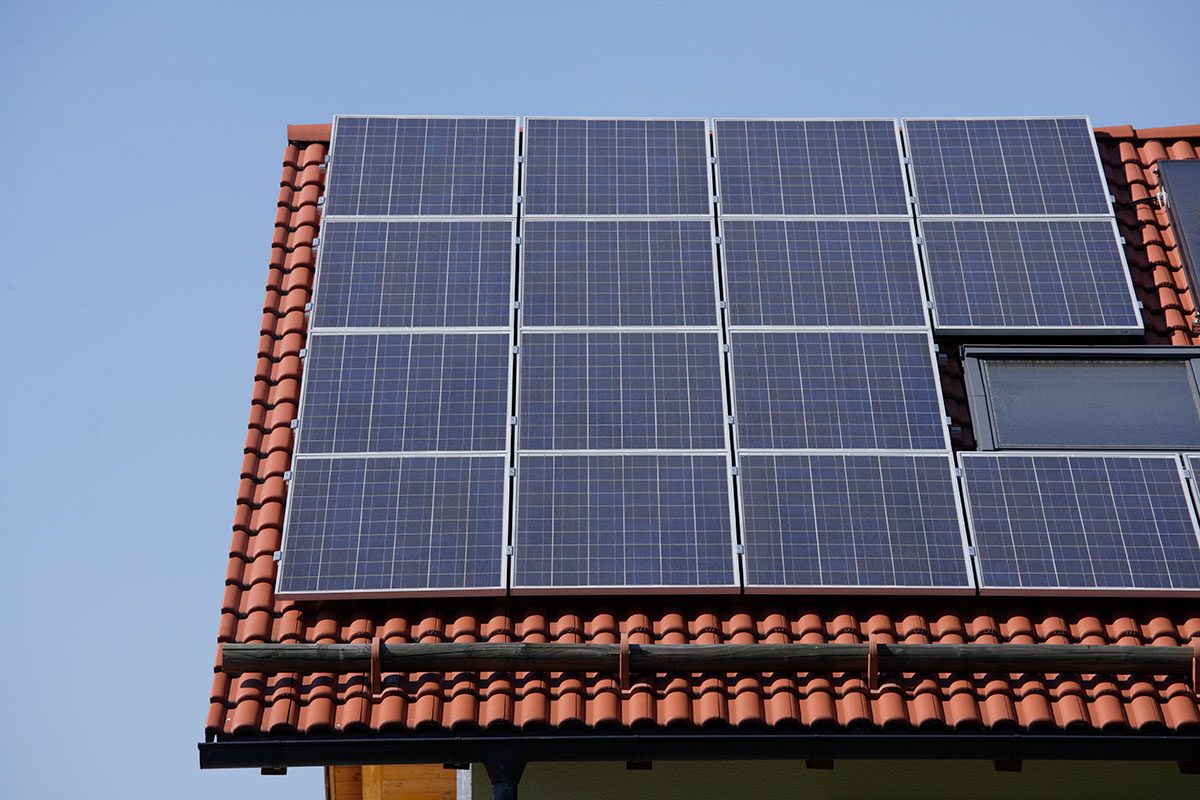If you've been eyeing solar, HVAC or other energy-efficient home upgrades, time is of the essence to avoid paying full price.

How to Claim Clean Energy Tax Credits Before They Disappear

There are many ways to make homes more energy efficient. Heat pumps, electric water heaters, upgraded insulation, induction cooktops and solar power systems can all help lower greenhouse gas emissions and, often, power bills.
Both of those benefits seem to be on a lot of our minds these days, as extreme weather becomes more common, and especially as home energy costs have risen on average by more than 20% since 2020. In fact, more than three million Americans have saved more than $8 billion on home upgrades thanks to the Inflation Reduction Act’s (IRA) clean energy tax credits and incentives.
“The clean energy tax credit has been one of the most important federal incentives for homeowners and businesses to invest in renewable technologies,” says Landon Wimmer of Empower Home Service. “It covers up to 30% of the cost and has helped accelerate our country’s shift toward cleaner, lower-cost energy.”
Since going into effect in 2023, the IRA has set off a domino effect, lowering utility bills, reducing pollution and creating a surge of new jobs in the clean energy sector. But those incentives are coming to a screeching halt at the end of 2025.
However, the good news is, it’s not too late to benefit from them. Here’s what to know about the clean energy tax credits, and how to take advantage of them for your home, before they’re gone.
What Is the Clean Energy Tax Credit
The clean energy tax credits — officially called the Energy Efficient Home Improvement Credit (25C) and the Residential Clean Energy Credit (25D) — help homeowners save money when upgrading to energy-saving and comfort-enhancing technologies such as heat pumps, rooftop solar, upgraded insulation and battery storage.
Why Are the Clean Energy Tax Credits Ending
The “One Big Beautiful Bill,” passed by Congress in the summer of 2025, phases out these credits.
“Despite being popular, bipartisan and highly effective, the credits were targeted as part of a broader effort to undermine clean energy development, which had been booming since the passage of the IRA,” says Alex Amend of Rewiring America. “Unfortunately, for American families, this means fewer resources for households to upgrade their homes in order to reduce their energy costs.”
When Do The Clean Energy Tax Credits End?
For homeowners, both the 25C and 25D credits will officially expire at the end of 2025, nearly a decade before the original planned end date. For commercial projects, the deadline to start construction is July 4, 2026, and those projects must be completed by December 31, 2027.
“There’s no soft landing here, no phase-out, no gradual step-down,” says Wimmer. “After that, most of the major clean energy incentives are off the table.”
How to Take Advantage of the Clean Energy Tax Credits Before They End

If you’re thinking about upgrading your heating, cooling and water heating, or adding rooftop solar or an EV charger, get quotes now and schedule your project for completion before the end of 2025. To receive the credits, it’s imperative the project be totally finished by Dec. 31, 2025, so the earlier you can get the work scheduled the better, in case something ends up delaying installation.
Stack federal credits with state, local, and utility incentives to maximize your savings. Use Rewiring America’s Tax Credit Cheat Sheet, Savings Calculator and Personal Electrification Planner to help find pertinent incentives, plus understand and plan your transition clean energy.
Other Changes Due to the OBBB
Beyond eliminating federal clean energy tax credits and incentives for residential homes, clean energy advocates point out that the OBBB also deals a major blow to curbing global warming, is predicted to raise U.S. energy costs by over $50 billion annually and result in diminishing clean energy generation over the next decade by 820 terawatt-hours, which is equal to today’s combined coal and nuclear power.
“With so much at stake, now is the critical moment to ramp up education, remind Americans that solar remains a smart financial choice, and get involved with community and advocacy groups to protect and extend remaining incentives,” says Jarell Mason of Aurora Solar. “Protecting these credits isn’t just about solar, but it’s about safeguarding a cleaner, more resilient energy future for all.”
Other Clean Energy Credits May Continue
Many states, utility companies and local governments also offer clean energy tax credits and incentives that may continue or even escalate once the federal program ends. For example, in July 2025, California announced it would re-introduce the Tech Clean Rebate.
“[The federal] rollback comes despite continued public interest in home energy upgrades and growing demand for cleaner, smarter home systems… so we expect to see more action at the state and local levels to help fill the gap,” says Paul Lambert of Quilt heat pumps. “We also continue to hear from partners that they still remain very busy and that the momentum is still very much alive.”
About the Experts
- Alex Amend is Director of Communications at Rewiring America and recently secured grant money to help install a solar and battery backup system at his local fire station in rural New Mexico, where he serves as a volunteer firefighter.
- Landon Wimmer is CEO of the solar and energy-efficient home services company Empower Home Service, which he launched in 2017. He’s spent his career leading energy-efficiency initiatives across the Southwest, and has helped thousands of homeowners reduce their utility bills.
- Jarell Mason is Strategic Partnerships Manager at Aurora Solar, where he leverages his backgrounds in engineering, finance and entrepreneurship to support innovation in clean energy.
- Paul Lambert is co-founder and CEO of Quilt heat-pump manufacturers, where he is dedicated to helping mitigate climate change. He is also a public speaker, most recently giving commentary on the ending of the clean energy tax credits.














